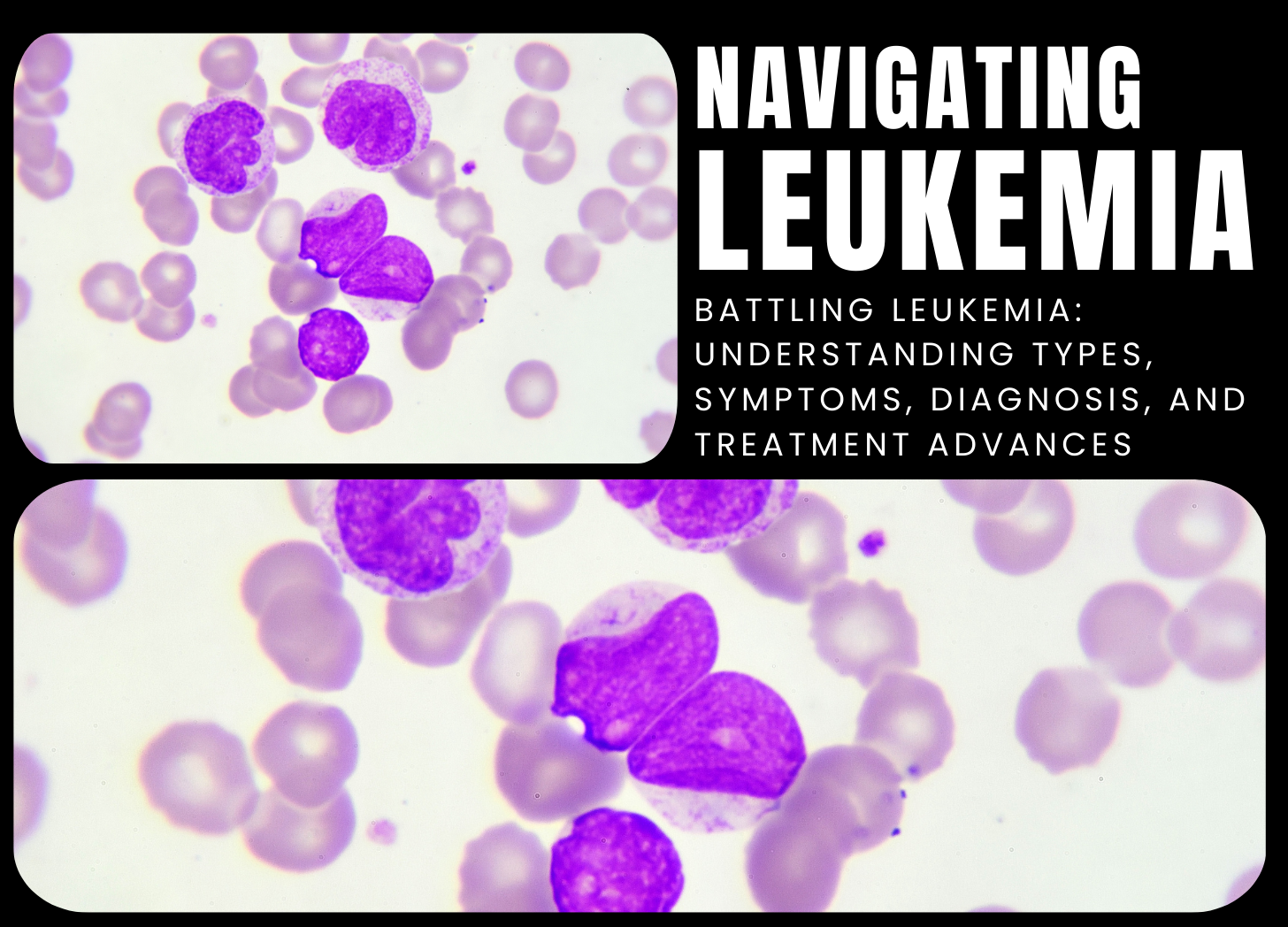Contact Us
Contact Us

Leukemia is a malignancy that affects the blood and bone marrow, resulting in an abnormal production of white blood cells. These abnormal white blood cells, known as leukemia cells, fail to function properly and crowd out good blood cells, reducing the body’s capacity to fight infections and regulate bleeding. Leukemia is categorized into four forms based on the type of white blood cell involved: acute lymphoblastic leukemia (ALL), acute myeloid leukemia (AML), chronic lymphocytic leukemia (CLL), and chronic myeloid leukemia (CML). Each variety has unique characteristics in terms of onset, progression, and therapy.
Acute lymphoblastic leukemia (ALL) and acute myeloid leukemia (AML) are distinguished by the fast proliferation of immature white blood cells, which results in the inhibition of normal blood cell production. These kinds of leukemia usually advance quickly and require immediate treatment to avoid consequences. Acute leukemia symptoms can include fatigue, weakness, fever, recurrent infections, easy bruising or bleeding, swollen lymph nodes, and bone discomfort.
Chronic lymphocytic leukemia (CLL) and chronic myeloid leukemia (CML) are distinguished by the steady buildup of mature but aberrant white blood cells, which may not present symptoms at first and grow more slowly than acute leukemia. Chronic leukemia symptoms can include swollen lymph nodes, weariness, weight loss, fever, night sweats, and abdominal discomfort. Chronic leukemia might be discovered coincidentally during routine blood testing or medical checkups.
Leukemia is often diagnosed using a combination of medical history, physical examination, and laboratory tests such as complete blood count (CBC), blood smear, bone marrow biopsy, and genetic testing to confirm the presence of abnormal cells and determine the type and subtype of leukemia. Imaging studies, such as X-rays, CT scans, or MRI scans, may also be used to assess the spread of disease and identify problems.
Leukemia treatment is determined by the type, subtype, and stage of the disease, as well as individual characteristics such as age, general health, and preferences. Common treatment options include chemotherapy, targeted therapy, immunotherapy, radiation therapy, and stem cell transplantation. In some circumstances, cautious waiting or supportive care may be indicated for chronic leukemia with low-risk features or for elderly persons with concomitant conditions.
Clinical trials are now underway to investigate novel treatment techniques and improve results for patients with leukemia. These could include novel targeted medicines that target leukemia cells while sparing healthy cells, immunotherapies that use the body’s immune system to fight cancer, and precision medicine techniques based on individual genetic profiles.
In conclusion, leukemia is a form of cancer that affects the blood and bone marrow, causing abnormal white blood cell production. While leukemia can be a difficult diagnosis, advances in treatment have resulted in better outcomes and quality of life for many individuals. We can make headway in the fight against leukemia and other blood malignancies by raising awareness, encouraging early identification, and expanding research activities.
References:
1.American Cancer Society. (2022). Leukemia. Retrieved from https://www.cancer.org/cancer/leukemia.html
2.National Cancer Institute. (2022). Leukemia. Retrieved from https://www.cancer.gov/types/leukemia
Post a Comment